5. DISNEYLAND

Once upon a time, there was only Disneyland. Yes, since long before the “Walt-o-graph” typeface or the corporate “Disney” logo, Walt Disney’s original magic kingdom has been identified by instantly-recognizable Medieval lettering initially developed by illustrator and artist Jacques Rupp.
Pretty quickly, Rupp’s hand-drawn design (which also served as the logo of Walt’s ABC television show) was replaced with a more standardized custom wordmark that became the park’s instant identifier:

When you think about it, it’s kind of miraculous that Disneyland’s logo doesn’t even hint at the branding or identity of its modern corporate overlord – what must be a very, very rare exception in an otherwise ironclad style guide for the company. But just because Disneyland’s logo today looks a lot like it did 60 years ago, that doesn’t mean there haven’t been some interruptions and modifications in the design.
When Disney’s California Adventure opened in 2001, Disneyland was suddenly the name of an entertainment destination property and the name of one of the two theme parks on that property. So the original, 1955 theme park was officially renamed Disneyland Park, creating this new logo:

… A natural refinement!
But what to do about the larger property it sat within? To celebrate the expansion and the opening of a second gate, Disney officially redesignated the new multi-park entertainment complex with its own modifier. Now, Disneyland Park was just one part of the Disneyland Resort.
“Carried” into the 21st century by the hip, edgy, modern California Adventure, this new resort needed to distinguish itself from the “antique” Disneyland Park that resided within. That’s what created this logo:
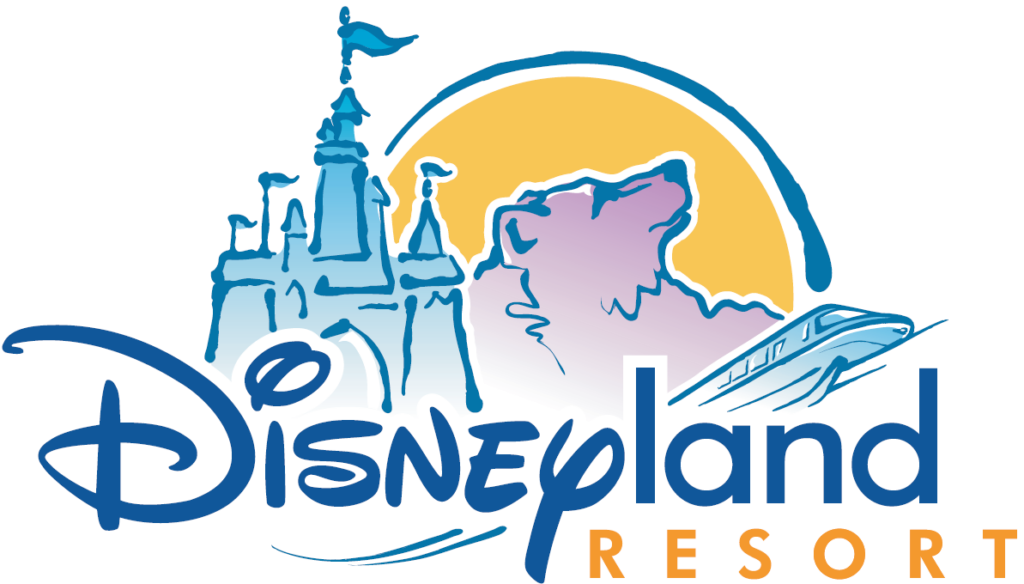
When referring to the entire Resort, Sleeping Beauty Castle would lose its center-stage placement and share the spotlight with the icon of the new park, Grizzly Peak, with a sun rising above it. A sleek Monorail is seen gliding through a new wordmark: the corporate typeface “Disney” and a sans serif “land.”
It turns out that the same intensely-loyal, generations-long visitors who didn’t care for Disney’s California Adventure also didn’t like the new logo. It was jarring to see the classic Disneyland type “replaced” on marketing materials & resort-wide signage with the corporate logo, expressly tying the home-grown park that Walt himself stepped in to the $50 billion international media conglomerate that had developed behind it in the half-century since. The result?

In 2005, the modern-made resort logo was swapped for a classic on all signage, marketing, and print pieces. Now, both Disneyland Park and Disneyland Resort share nearly-identical logos, differentiated only by the small modifier tailing at the bottom right corner. And for most fans, that means that all is right with the world… er… land.
6. DISNEY’S HOLLYWOOD STUDIOS
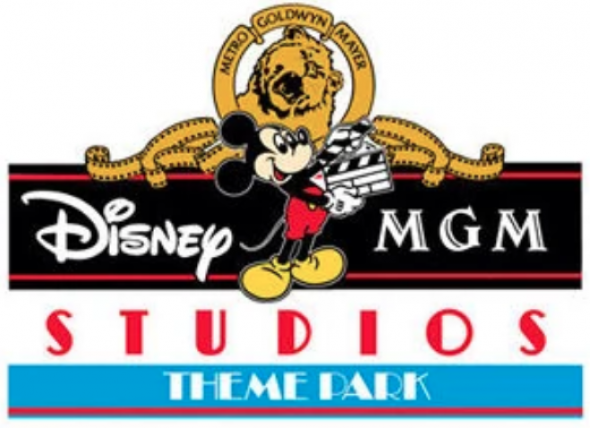
A graphic design student could write a doctoral thesis on the logo for The Disney-MGM Studios Theme Park as it appeared when the park opened in 1989. The brainchild of still-new chairman Michael Eisner, the park was envisioned as both a way to lengthen stays at Walt Disney World, and as a preemptive strike against Universal Studios’ own announced Orlando park.
Have you ever wondered, “Why MGM?” In the ’80s, Walt Disney Productions was in rough shape, having gone decades without the kinds of hits it had experienced in Walt’s time. Disney was a tarnished brand that lacked both the Golden Age history of major movie studios and the appeal of current blockbusters. Frankly, MGM was in no better shape in terms of modern hits. However, MGM was a brand inherently tied to classic cinema, and could bolster the bona fides of Disney’s new movie park in the public eye.
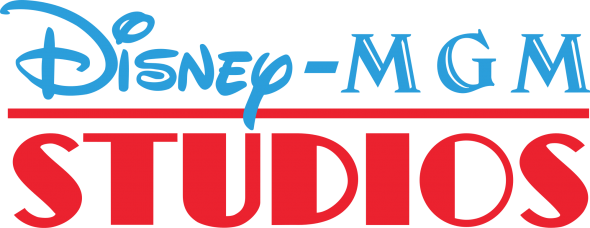
For practically nothing, Disney gained the worldwide exclusive rights to theme parks using MGM’s brand, while simultaneously gaining access to a portion of the studios’ catalogue of classic films. The park was essentially divided into two halves, each anchored by a single ride: the front half as a celebration of the Golden Age of Hollywood featuring the headlining Lost Legend: The Great Movie Ride, and a back-half comprised of real, functioning production facilities and led by the Declassified Disaster: The Backstage Studio Tour.
By the 2000s, things had changed. Thanks to Michael Eisner and his successor, Bob Iger, Disney was no longer a tired brand on the edge of collapse; it was a leading international media conglomerate with ABC, ESPN, The Muppets, and the revolutionary Pixar among its catalogue. MGM who? “MGM” began to disappear from merchandise that instead referred to the park as “Disney Studios.” In January 2008, Disney made it official. Overnight, signage was swapped and the park was renamed with a new logo.
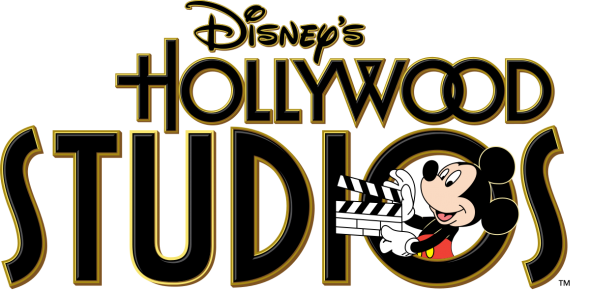
The park became Disney’s Hollywood Studios. The change didn’t go as far as many had hoped… Certainly by the 2000s, the allure of the “studio” park had faded; their backlot aesthetics, mish-mashed intellectual properties, and towering soundstages looked and felt like low-cost cop-outs in an era defined by Animal Kingdom and Islands of Adventure. If Disney was going to go to the trouble of rebranding the park, why not remove the “Studios” identity entirely?
In a 2015 shareholder meeting, a six year old asked Bob Iger if the park’s name would change. The CEO replied that it would, only then recognizing that no announcement of the kind has been made. He quickly recovered: “We’ll announce that we’re changing the name, but we won’t announce what we’re changing it to. How’s that?” That change seemed doubled-assured when, soon after, it was announced that new lands dedicated to Star Wars and Toy Story were coming to the park, leaving the “Studio” direction behind for good.
In 2017, Disney polled guests with potential new names for the park, including Disney Beyond Park, Disney XL Park, Disney Hyperia Park, and the apparent frontrunner, Disney Cinemagine Park. Reaction online was swift and merciless… so much so that the Disney Parks Blog had to officially squash the rumors, confirming that “the Disney’s Hollywood Studios name will remain the same for the foreseeable future since we are immersing our guests in a place where imagined worlds of Hollywood unfold around them from movies and music, to television and theater.”
By that time, it made sense for Disney to drop their pursuit of a potential new name. With Star Wars: Galaxy’s Edge on the way, it wouldn’t have been wise to rename Disney’s Hollywood Studios just as visitors came to Orlando looking for it.

In May 2019 – during an extended celebration of the park’s 30th anniversary – Disney previewed a new logo and identity for the park. The logo is essentially just a text treatment with the “Disney’s” corporate mark and a sans-serif “Hollywood” containing three perfectly round Os and a small, trailing “Studios” tag. Though its “standard” appearance is somewhat dull, the logo’s Os are commonly filled-in black with BB-8, Mickey Mouse, and Woody placed inside, representing the three new mega-attractions meant to revitalize and redefine the park:

To that end, it’s no surprise that the new logo downplays “Studios” and emphasizes “Hollywood.” After all, Disney’s Hollywood Studios is still a park that celebrates movies, but not really how they’re made. Plus, you can see how it would be easy for Disney to swap the word “Studios” for, say, “Adventure” or “Journeys” or “Legends” on a whim when the time is right. The only thing that’s surprising about the 2019 logo is that Disney didn’t take the opportunity to drop the possessive-s!
Of course, Hollywood Studios didn’t go through with a name change during its radical expansion… but another Disney “studio” park did…
7. Walt Disney Studios
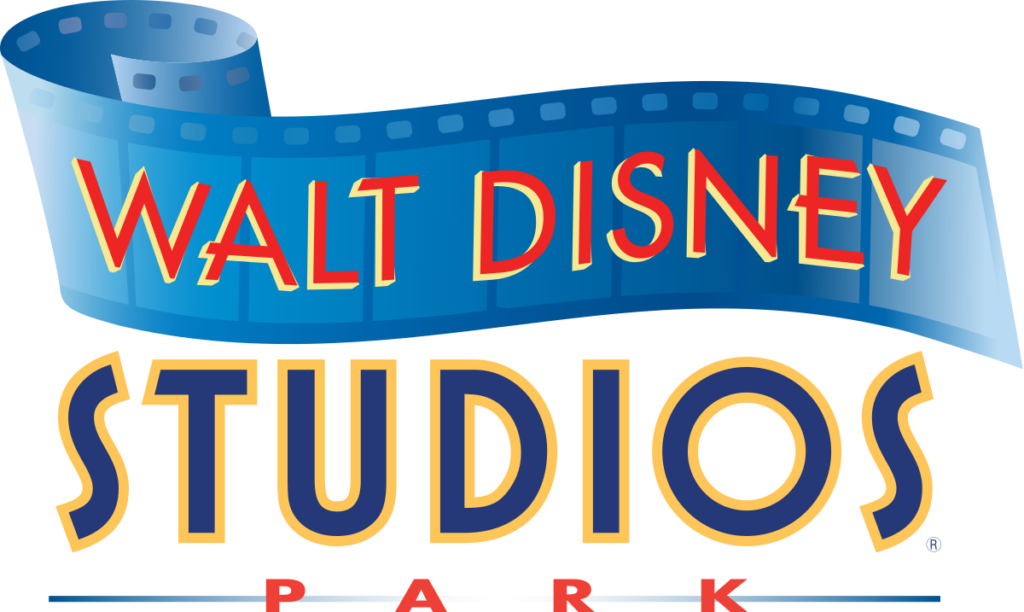
Despite failing to find its financial footing, contractual obligations required Disneyland Paris to add a second theme park to the property by its 10th year. That how we ended up with 2002’s Declassified Disaster: Walt Disney Studios Park – by far the smallest, cheapest, and most embarrassing Disney Park on Earth.
Like its underbuilt siblings – 2001’s Disney California Adventure and 2005’s Hong Kong Disneyland – years of continuous piecemeal additions improved Walt Disney Studios’ ride count… In 2018, for example, CEO Bob Iger announced a multi-year, multi-billion dollar buildout that – like California Adventure’s a decade earlier – would add new rides, lands, and a new overarching identity to the park. The results of two decades of expansion are that today, the park includes “anchor” attractions like The Twilight Zone Tower of Terror, Toy Story Land, Web Slingers: A Spider-Man Adventure, Avengers Assemble: Flight Force (a reskin of Rock ‘n’ Roller Coaster) and the Modern Marvel: Remy’s Ratatouille Adventure, with a copy of EPCOT’s Modern Marvel: Frozen Ever After on the way.
That’s a lot of change… but would it lead to a new name? Maybe not, since Walt Disney Studios Park did increasingly celebrate the Walt Disney Company’s many studios – Disney + Pixar + Marvel + Star Wars. Plus, we’ve already been through this with Disney’s Hollywood Studios in Orlando, which – you’ll remember – opted not to use the studio-free names that had been considered, like Disney XL Park, Disney Hyperia Park, and Disney Cinemagine Park. So it might’ve seemed likely that even the expanded Walt Disney Studios Park would still be Walt Disney Studios. But… Nope!
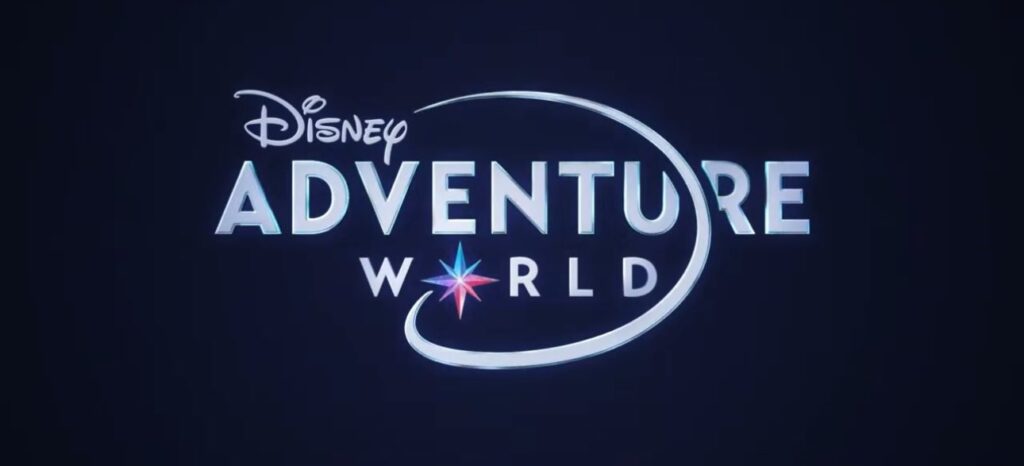
On April 12, 2024, Disney announced that once the World of Frozen land officially opens, it’ll coincide with a new name for the park as a whole: Disney Adventure World. It’s a generic name, but frankly, the former studio is a generic park in the sense that it has no centering capital-t Theme to build off of. Instead, its decades of piecemeal, then master-planned, additions amount to a park that could be called just about anything.
Kinda sorta trying to latch onto “World” in the same way EPCOT’s rearranged neighborhoods did, the park will start with “World Premiere” (a reimagined Studio 1), emptying into “World Premier Plaza” (with Tower of Terror and the park’s two large-scale theaters), then connect onward into “Adventure Way,” which leads to “Adventure Lagoon,” with “Worlds of Pixar” (Toy Story Land, Place de Remy, and Toon Studio), “World of Frozen,” and “Avengers Campus” kinda-sorta built “around” it (if you take “around” in a very loose sense.) So yeah, it’ll still be a bit of a mess. But with expansion pads around the lagoon earmarked for two more immersive lands, at least the park has the future in mind.
Anyway, the more interesting aspect for today’s discussion is that Disney seems to have finally settled on a brand for its post-studio park… would it really be so surprising, for example, if the same brand eventually made its way to a certain park in Orlando or Anaheim? For example, just the addition of the word “World” could change Disney California Adventure into Disney California Adventure World, shifting “California” to the modifier and framing device and making “Adventure World” the park’s name. Similarly, couldn’t Disney World’s park become Disney Hollywood Adventure World? Hmm…


